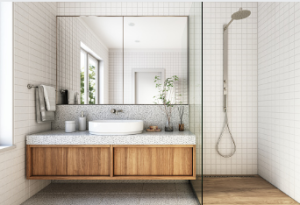A mirror is a reflective surface that reflects an object’s image. Light is focused through a lens onto a mirror, reflecting the image in the opposite direction. It allows the viewer to see an image from an entirely different angle. It can be particularly useful for interior design applications. Read on to learn more about the benefits and uses of mirrors.
 Reflecting surfaces
Reflecting surfaces
Reflecting surfaces are reflective objects that reflect light. For example, light rays passing near a mirror or a polished surface will reflect off of the mirror’s surface. The angle between the incident and reflected rays is equal to the angle of incidence. The surface’s reflective properties depend on the illuminant’s spectral properties.
Reflecting surfaces can be of two types: specular and diffuse. Specular reflection is more difficult to analyze than diffuse reflection. However, the differences between these two types of surfaces can be seen when comparing them. The difference between the two types of surfaces is that the diffuse reflection of a surface is less severe than that of an irregular surface.
Reflective surfaces can be smooth or rough. A smooth surface will reflect light from one point, while a rough surface will reflect light from many different directions.
Materials used to make mirrors.
Many different types of materials can be used to produce UnleyGlass mirrors. The most common are glass, but other materials can also be used. These include polycarbonate, acrylic, and polished metal. Each has its benefits and disadvantages, and the type you choose should be determined by the type of application you want your mirror to serve.
One of the advantages of UnleyGlass stainless steel is its durability. Stainless steel is much stronger than glass and lasts for a long time, especially when used in a marine environment. However, the downside to stainless steel is that it is susceptible to thermal fatigue and can crack if exposed to cold temperatures. Plastics, however, are lightweight and don’t break easily. They’re also UV resistant and shatter-proof. They’re also easy to transport.
If you’re interested in installing neon light mirrors in your home or business, you’ll want to ensure that it’s made of high-quality materials. Silicone, for example, tends to turn yellow and self-sulfurize. Other materials to watch out for include too much silica, reducing transparency and colour and reducing tensile strength.
Their uses
In architecture, mirrors are particularly popular as design elements. Many postmodern and late-modern buildings are studded with mirrors. Examples of these structures include the Campbell Center in Dallas and the John Hancock Tower in Boston. In addition to serving as architectural elements, mirrors also serve a practical purpose: they reflect sunlight.
Light rays from the Sun must follow parallel paths to reach Earth. Archers use the same technique to hit the bull’s eye, and this property of a mirror is known as focal length. Its focal length is given by the relationship between the focus and the mirror’s distance.
Cost
Mirrors are a great addition to any home and can make a room look larger than it is. However, they can add up fast. The best mirrors are made from high-quality glass and will last for years. Cheaper mirrors could be better and will produce a distorted or blurred reflection. You can choose a frameless mirror if you want to save money. However, if you want a more ornate, elaborately framed mirror, you may need to spend more money.
The use of mirrors Adelaide dates back to the Middle Ages. Mirrors were often used as adornment pieces by the aristocracy. However, in the 17th and 18th centuries, they were used to improve lighting and give the illusion of space. Eventually, mirrors became popular among the bourgeoisie and became an essential part of their living spaces.
Mirrors can be used to reduce the energy used to control air temperatures. In the United States, about 15% of all electricity is spent on air conditioning. Mirrors can reduce this, saving a building up to 100MWh a year.
Mirrors can be made from different materials, but most commonly, they are made of glass. Metal can be used as the mirror’s substrate, but this can make it more difficult to assemble. It can also be heavier, making it less practical for many applications. Nevertheless, a metallic mirror is a good option in certain circumstances. Metals are also lightweight, making them ideal for optical systems involving multiple mirrors.